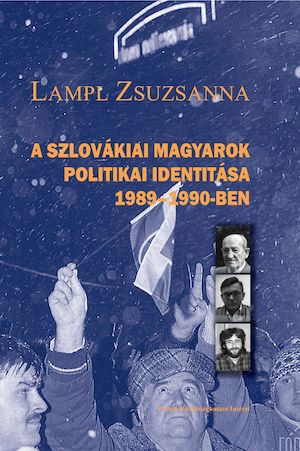A szlovákiai magyarok politikai identitása 1989–1990-ben
The Political Identity of Hungarians in Slovakia in 1989–1990
Author(s): Zsuzsanna Lampl
Subject(s): Social Sciences, Sociology of Politics, Identity of Collectives
Published by: Fórum Kisebbségkutató Intézet
Keywords: Czechoslovakia;1989–1990;Hungarian minority;political parts;political elite; voters
Summary/Abstract: The monograph deals with the subject-matter of the political identity of the Hungarian political elite and Hungarian voters in Slovakia in the period from 17 November 1989 to the end of 1990.In the author´s view, political identity is a four-dimensional phenomenon. It consists of a dimension of values, opinions, actions and self-affirmation.In the first chapter, the author analyzes the conditions and background of the emergence of the first post-November Hungarian political elite, i.e. the Hungarian Independent Initiative (MNI), the Együttélés Political Movement and the Hungarian Christian Democratic Movement (MKDH). She deals with their values and ideological profile, views presented in the form of political programs, statements and press appearances, their typology and fault lines.The second chapter describes the ideas of the people of Czechoslovakia, the ethnic Hungarians in Slovakia and the November political elite (Civic Forum (OF), Public Against Violence (VPN) and the Hungarian Independent Initiative) in November 1989 about the future, to what extent their visions corresponded, how the views of the political elite gradually changed and how these departed from the ideas of the majority of citizens.The third chapter discusses in what political actions were the values and views of the political elite manifested, in what fundamental political-economic changes they were translated into and what were the societal impacts of these changes.The central theme of the fourth chapter is the transformation of living conditions and value orientations of the population—especially of citizens living in the Slovakian part of the country—, which part was affected by the consequences of the political elite´s above-mentioned political and economic decisions and their implementation. At the same time, in this chapter we get a picture of how people—both Slovaks and Hungarians—lived through these changes and what they thought about them.The fifth chapter deals with the increasingly pressing national minority issue, which manifested itself in the form of Czech-Slovak and Slovak-Hungarian tensions. The analysis concerns both forms of nationality issues, both from the perspective of the political elite and of the Czech, Slovak, and Hungarian public.In the sixth chapter, the author seeks an answer to the question, what mirror did the citizens hold up to the political elite in the first free parliamentary and municipal elections. Given the election results, how did the political identity of the voters and that of the political elite converge in them?The final, seventh chapter outlines the typology of the political elite´s political identity and that of the voters belonging to the Hungarian national minority from the end of 1989 to the end of 1990.
Series: NOSTRA TEMPORA
- Print-ISBN-13: 978-80-89978-15-1
- Page Count: 240
- Publication Year: 2020
- Language: Hungarian
- eBook-PDF
- Sample-PDF
- Table of Content
- Introduction

